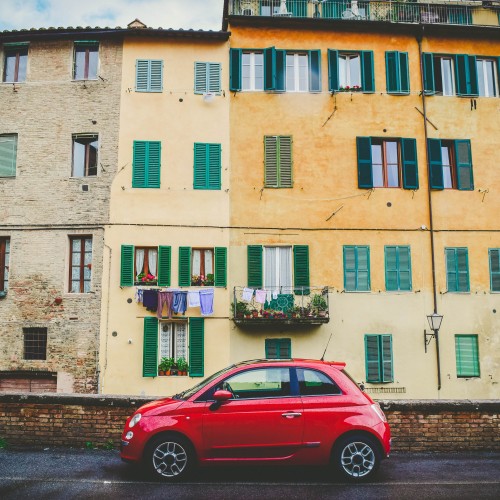
Brand Heritage: Between Culture and Nostalgic Marketing
7 March 2018“Tradition is not something that can be simply inherited; those who want to take possession of it must conquer it with great difficulty,” stated the Nobel Prize winner Thomas Stearns Eliot in those early 1900s, when society saw for the first time everyday objects mass produced and accessible to all, exhibited in the large shops of the kicking America that was just breaking with traditions and looking straight into the future. Today, after a century, we return to look uncertainly at the technology that advances with a rapid pace and with a certain benevolent nostalgia to a more simple and stable past time. It is in this perception of insecurity that the brand heritage inserts successfully itself, that is the dimension of the brand identity that is based on its longevity and on a narrative that has as its object the history of the company.
Packaging, advertising campaigns, corporate museums and a return to designs or production processes of the past are just some examples of the transmission of an “organized memory” of the company and of the brand, capable of bypassing the defensive barriers built by consumers and speaking directly to their emotions. However, brand heritage should not be confused with nostalgic marketing, although it can often be used as an support in communication. A historical brand is a brand with a positioning and an added value based on its heritage, the result of the precise choice to use its history as a key component of the brand’s identity. Many brands have a history but only a few are historical brands that are able to exploit this distinctive factor as an asset in a global market where tradition and identity seem to be the only defense against a ruthless competition often played on lower prices.
One of the most emblematic examples is undoubtedly the ‘Made in Italy‘, an association of words that evokes history, quality and tradition wherever in the world. An unmistakable brand that, relying on the emotional factor, speaks about authenticity and a specific lifestyle. “The essence of Made in Italy comes from the union between creativity, people, passion, culture and discreet elegance,” says Angelo Manaresi, Scientific Director of the Global MBA in Design, Fashion and Luxury Goods of Bologna Business School, where every year students come from all over the world to live an educational experience in contact with the know-how gained from Italian excellence. Not only Italy as a brand but also the companies that have made the history of international branding make up the complex and unique heritage of recognizable Italian icons all over the world. “We undertake projects with companies to help develop the future career of our students and teach them about the link between the self-awareness of Renaissance tradition and the capabilities needed to compete at the global level in contemporary markets,” concludes Manaresi.
A story, that of the Italian brand heritage, told in more than sixty historical archives, corporate museums and foundations scattered throughout the national territory, capable of intercepting an industrial tourism in full development, enhancing at the same time the business culture and the territory. The brand, through its history, becomes culture and dissemination on themes of primary importance such as design, fashion and food. The business museums have the extraordinary ability to convey the brand as part of the identity of the country, regardless of the product itself and the relationship with the customer. An example is the Motor Valley of the Emilia-Romagna region, which gathers in 100km the Italian excellence of international icons such as Ferrari, one of the most recognizable brands in the world, Lamborghini and Ducati, members of primary importance of the Business Network of Bologna Business School.
Among the most successful Italian examples, which have built the celebration of the brand on their history, we also find the big names of fashion and design such as Gucci, Ferragamo, Alessi, Kartell and Poltrona Frau. The company museums that display the result of decades of building on their brands become places of infotainment, integrated into the communication strategies of the companies but at the same time able to compete in terms of attractiveness and quality of the exhibitions with the most important museums and cultural centers.
Brand heritage is a communication asset for the company, a cultural heritage treasure for the country and an emotional journey for the consumer. Because the story, told by the brands, is actually also our own.
